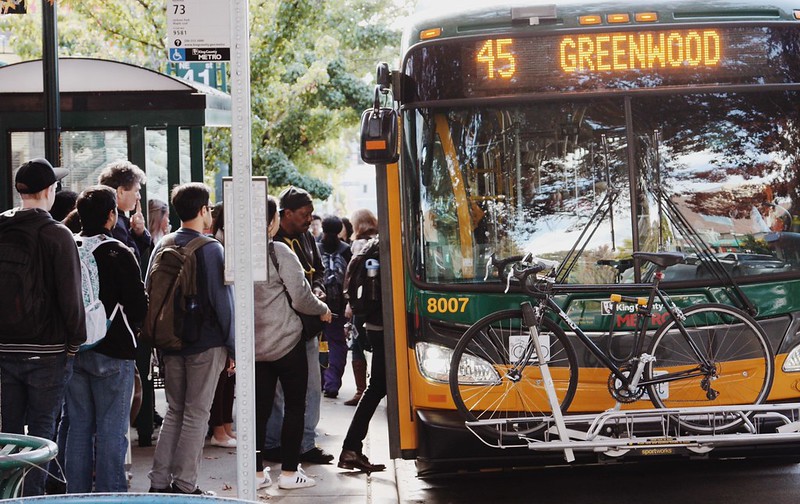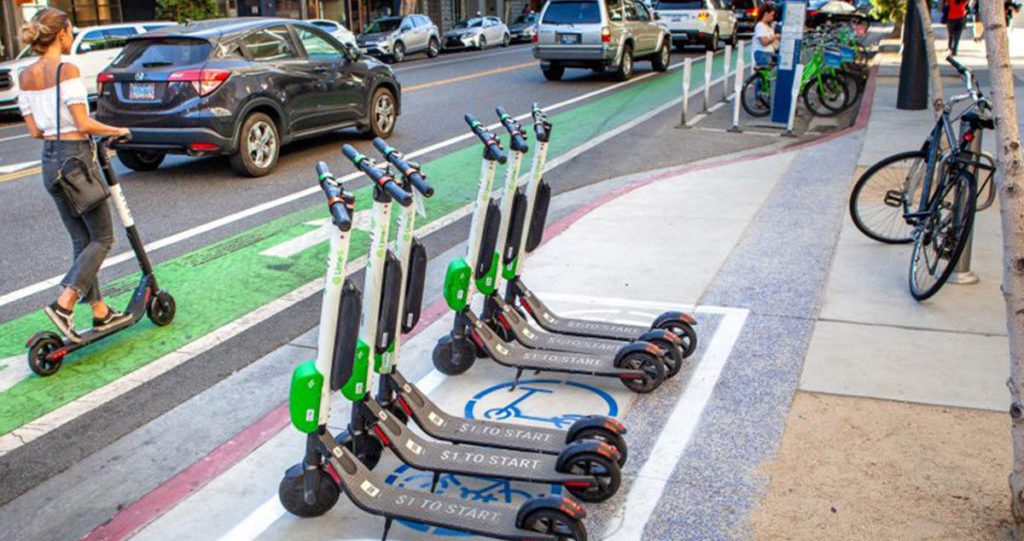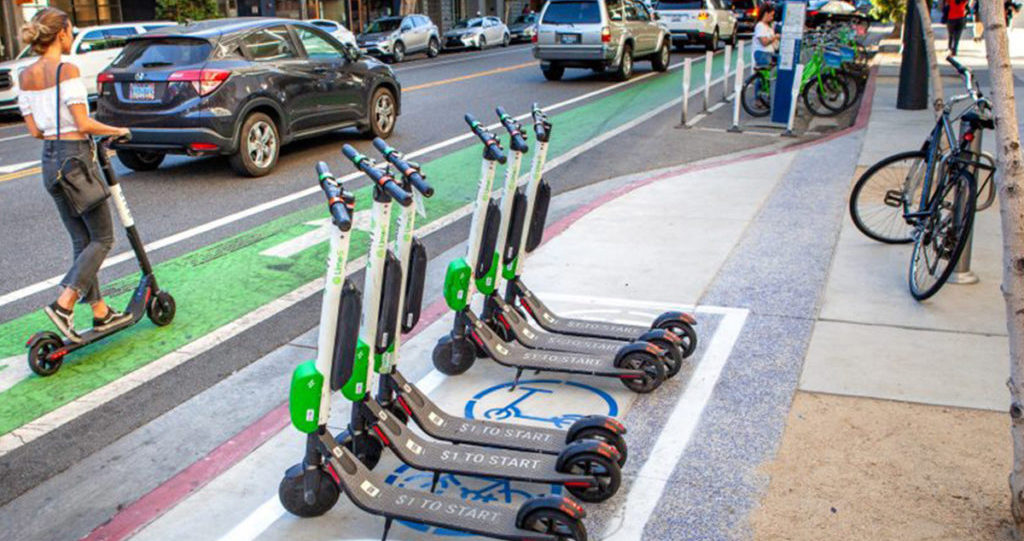
Connecting people to jobs and services week: Rethinking shared mobility to prioritize access

 Transportation is fundamentally about connecting people, but America’s transportation system focuses on moving cars instead. Madlyn McAuilffe from the New Urban Mobility Alliance (NUMO) wrote this guest post about the consequences of our misguided priorities and how we can get back to focusing on building places and transportation networks for people.
Transportation is fundamentally about connecting people, but America’s transportation system focuses on moving cars instead. Madlyn McAuilffe from the New Urban Mobility Alliance (NUMO) wrote this guest post about the consequences of our misguided priorities and how we can get back to focusing on building places and transportation networks for people.
It’s “Connecting people to jobs and services week” here at Transportation for America. All week we’ll be exploring why improving access should be the goal of the federal transportation program—not vehicle speed.
Transportation has always been about connection—connecting people to places, resources, experiences, and of course, other people. Moving people—facilitating access—was the original goal. Transportation was simply the means by which we reached our destinations.
We’ve journeyed a long way since the advent of the automobile, and somewhere along the way toward creating a national transportation system, our priorities shifted to focus not on moving people but on moving cars.
Living with the consequences
The consequences of American auto-centrism have been devastating and far-reaching. Despite an urgent global climate crisis, transportation is the primary source of emissions in the U.S., and a growing source as auto sales (particularly for SUVs and trucks) rise
We’re told by $40-billion worth of endless, highly-stylized auto commercials that cars represent independence, yet they often are the largest purchases many American households will ever make. 72 months of payments, thousands of dollars of high-interest debt, and economic dependence on an inefficient and dangerous mode of transport can hardly be called freedom.
Even the metrics we use to determine the success of our transportation system are off. We measure the efficacy of our roads and policies by speed traveled (i.e., level of service) rather than by the number and diversity of people who can safely and affordably access jobs, school, healthcare, grocery stores, and community centers. Yet rather than reimagine how we fund transit projects or investigate zoning land for multiple uses, we spend outrageous amounts of money on adding lanes to highways, inducing demand for driving, and then condemning commuters to become stuck in hellish congestion.
We often hear about “crumbling infrastructure,” but rarely mentioned is the fact that transportation decision-makers invariably decide and are incentivized to expand the network of roads that are already poorly maintained rather than fix what we have already built.
It doesn’t have to be this way, but how do we begin digging ourselves out of the ditch we have created?
Any roadmap forward starts with rethinking the values underlying how we do transportation, land use, infrastructure, labor, and more. Change the values, change the system; change the system, change the world. Sounds easy, right?
The principle of the thing
A tectonic transportation value shift is already underway, though—and unsurprisingly, it’s a team effort.
Early 2017 witnessed the debut of the Shared Mobility Principles for Livable Cities, a framework for policymakers, leaders, influencers, urban designers, academics, advocates—everyone—to guide stakeholders toward the best outcomes for all people. Developed by Robin Chase and a founding coalition of global NGOs including Transportation for America, the Principles encourage us to rethink how we plan not just our mobility, but also the design of both our transportation system and cities to value inclusivity, connectivity, and shared mobility that is sustainable and just.
The first three Principles—planning cities and mobility together; prioritizing people over vehicles; and supporting the shared and efficient use of vehicles, streets, and land—are key to understanding the Shared Mobility Principles as a whole. The remaining Principles stem from the core value of access, which must also serve as the metric by which any transportation, infrastructure, or other development project must be reviewed. What opportunities will this proposed transit-oriented development project provide and to which communities of people? Will this mobility hub provide first/last-mile solutions in transit deserts? Which transportation investment will create improved access to jobs, school, and other destinations for the greatest number of people: an additional lane for single-occupancy vehicles or a dedicated bus lane for thousands of passengers each day?
Admittedly, the Shared Mobility Principles are ambitious. Relearning everything we’ve come to accept as a given in planning, developing, designing, and maintaining not just our transportation system but cities themselves is daunting. To create lasting change that reaches and improves the lives of everyone, however, we must start by rethinking our values as well as what and whom we prioritize with the policies we craft and the projects we undertake. After all, cities are built for people, not cars. If people can’t access what they need where they live…we’ve failed.



